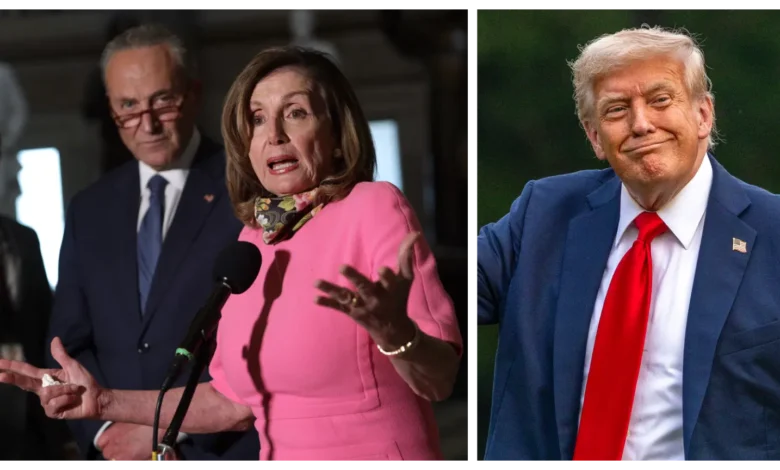Dems Lose Millions Of Registered Voters As Trump’s GOP Gains In Every State

The Democratic Party is grappling with a stunning collapse in voter registrations as Republicans surge nationwide, fueled by President Donald Trump’s expanding political coalition.
According to a New York Times analysis of registration data from L2, a nonpartisan firm that tracks voter rolls, more new voters registered as Republicans than Democrats for the first time since 2018. The shift comes after the 2024 election, when Trump expanded his reach among men, younger voters and Latinos, reshaping traditional assumptions about partisan loyalties.
The data paints a sobering picture for Democrats. “Of the 30 states that track voter registration by political party, Democrats lost ground to Republicans in every single one between the 2020 and 2024 elections — and often by a lot,” the Times report said. The net effect was a 4.5 million-voter swing: Democrats shed about 2.1 million registrants, while Republicans gained 2.4 million.
Even in states long considered reliably Democratic, the erosion has been evident. California, one of the largest blue states where voters declare party affiliation, saw significant Democratic losses. By contrast, many Republican-led states such as Texas do not track partisan registration, meaning the overall national picture may underestimate GOP strength.
Still, the available numbers show a dramatic narrowing of the Democratic advantage. In the 30 states and Washington, D.C., that require voters to register by party, Democrats’ 11-point lead over Republicans in 2020 fell to just over six points in 2024.
Michael Pruser, director of data science for Decision Desk HQ, told the Times the trend has been relentless. “I don’t want to say, ‘The death cycle of the Democratic Party,’ but there seems to be no end to this,” Pruser said. “There is no silver lining or cavalry coming across the hill. This is month after month, year after year.”
The Republican gains have been particularly notable in swing states where partisan registration data is available. North Carolina, Pennsylvania, Arizona and Nevada all reported Republican advantages in new voter sign-ups between 2020 and 2024
For years, Democrats relied heavily on a sprawling network of nonprofit organizations to register younger voters and racial minorities. These groups, often funded by undisclosed donations, have enjoyed tax advantages that made mass voter registration inexpensive and attractive to donors. The assumption behind these efforts was that the majority of new registrants would lean Democratic.
Trump’s success in attracting working-class nonwhite voters has upended that strategy. The Times noted that blind registration drives no longer guarantee gains for Democrats, leaving the party in search of a more targeted — and far more expensive — approach.
Partisan political groups, unlike nonprofits, cannot rely on tax-deductible contributions to fund their operations. That means Democratic organizations must raise larger sums of money and spend far more per voter to remain competitive. Analysts estimate that securing one new reliably Democratic voter through targeted outreach can cost hundreds of dollars — a price tag that makes scaling up efforts difficult.
Meanwhile, Republican groups have capitalized on enthusiasm within Trump’s base to drive growth at the grassroots level. Trump’s appeal among working-class voters, combined with new strength among Latinos and young men, has broadened the GOP’s coalition
Compounding the challenge is what strategists describe as a lack of leadership and message. While Trump has consolidated his movement around the “Make America Great Again” banner, Democrats remain divided over policy priorities and electoral strategy. That fragmentation makes it harder to rally donors and grassroots supporters behind a unified plan.
The numbers suggest Democrats face a prolonged period of weakness. Their shrinking registration advantage could ripple through down-ballot races in Congress, governors’ mansions and state legislatures, weakening the party’s national infrastructure.
If Trump and his political heirs continue to expand the MAGA coalition across demographic groups, Democrats’ problems may deepen with each election cycle. For now, the trend line is clear — and it is running against them.





